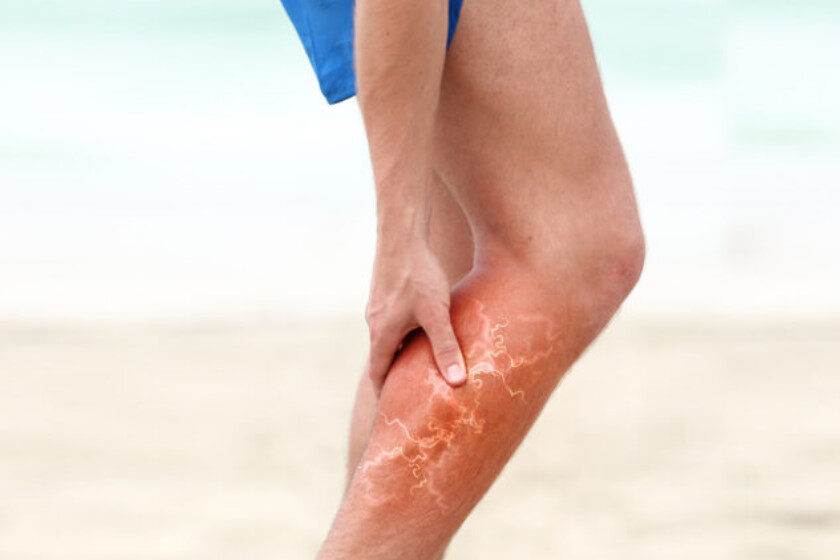
How is Critical Limb Ischemia treated?
Critical Limb Ischemia (CLI)
It is a condition manifested by pain at rest, a non-healing wound, or gangrene. It occurs due to severe blockages in the arteries of a person’s lower extremities/limbs (legs), which markedly reduces blood flow. This condition is a serious form of Peripheral Arterial Disease or PAD that is caused by the buildup of fats, cholesterol or some other substances in and around your artery walls.
Known as atherosclerosis, it leads to the narrowing and hardening of a person’s arteries over time due to the buildup of fatty deposits called plaque.
CLI can be a chronic condition that causes severe pain in the affected’s feet and toes. A result of poor blood circulation, this can lead to sores or wounds that don’t heal, especially in the feet and legs. This can lead to amputation of the affected limb if not treated timely.
Symptoms
Pain on walking is the most important symptom of CLI and is often often missed or thought to be due to old age or weak muscles. It mostly takes place in the affected’s legs and feet and does not go away along with causing some non-healing sores.
Some other symptoms that a person must check for are:
- Continuous numbness and pain in the feet
- Claudication – Pain on walking
- Shiny/dry/smooth skin on the feet or legs
- Thickening of the toenails
- A decreased pulse or its absence in the feet or legs
- Open sores/skin infections/ulcers that won’t heal
- Dry gangrene leading to dry and darkening of the skin on feet or legs
Risk Factors
Chronic Limb Ischemia occurs due to the hardening and narrowing of the affected arteries from plaque buildup. Some factors that contribute to this condition include:
- Age
- Tobacco consumption in any form (Smoked or chewed)
- Diabetes
- Overweight or obesity
- Sedentary lifestyle
- High levels of cholesterol
- High blood pressure levels
- A family history of atherosclerosis
Diagnosis
Critical Limb Ischemia is diagnosed on the basis of the person’s medical history, results from the visual examination, palpation, and Doppler examination of the peripheral arterial pulse. One or more of these methods may be used by your doctor to locate and diagnose blockages associated with this condition.
- Ankle-brachial index (ABI): The calculated result of the systolic blood pressure of the arm divided by the systolic at the ankle.
- Doppler Ultrasound: The type of ultrasound that measures the velocity and direction of blood flow through vessels.
- CT Angiography: An advanced X-ray procedure that uses a computer to create three-dimensional images.
- Magnetic resonance angiography (MR angiography): Here, radiofrequency waves are used to expose the patient to strong magnetic fields. A computer measures the energy released by the magnetic fields and creates two and three-dimensional images of blood vessels.
- Angiogram: A contrast dye is used to take X-rays of blood vessels.
Critical Limb Ischemia Treatment
Critical limb ischemia is a serious condition that requires immediate treatment to restore blood flow to the affected area. Preserving the limb is our number one priority.
Endovascular Treatment
CLI can often be treated with a minimally invasive endovascular treatment. The Vascular Center offers a full range of endovascular therapies. The severity and location of the blockages will determine the recommended treatment.
CLI patients have multiple arterial blockages. This includes blockages below the knee. The procedure involves puncturing the groin with local anaesthesia and inserting a catheter into the affected artery. CLI can be treated with some endovascular procedures, such as:
Angioplasty: A tiny balloon is inserted through a small puncture in the groin. The balloon is inflated one to three times with a saline solution to open the artery.
- 1. Cutting balloon: This balloon is embedded with micro-blades and used to dilate the affected area. The blades are used to cut the plaque’s surface, which reduces the force required to dilate the vessel.
- 2. Cold balloon (CryoPlasty): The balloon is inflated using Nitrous Oxide instead of saline. The gas freezes the plaque. This procedure is much easier for the artery. The plaque growth is stopped, and there is very little scar tissue.
- 3. Drug-eluting balloon: is a non-stent technology that involves effective homogenous delivery of anti-proliferative drugs processed by the vessel wall through an inflated balloon.
Stents: After an artery has been opened using balloon angioplasty, the metal mesh tubes that serve as scaffolding are left in their place.
- 1. Balloon-expanded: To expand the stent, a balloon is used. These stents are more durable but less flexible.
- 2. Self-expanding: Compressed Stents are delivered to the affected site. They expand upon being released. These stents can be more flexible.
Laser atherectomy: The tip of a laser probe vaporizes small pieces of plaque.
Directional Atherectomy: This catheter has a rotating blade that can be used to remove plaque from the artery and open the flow channel.
Surgical Treatment
In case of long segment blockages or endovascular treatment failures, surgical procedure may be required. It involves either bypassing the affected segment using a vein from the patient or using a synthetic graft to re-route the blood from healthy vessels.
The length of hospitalization following a bypass operation can vary from a few days to more than one week. The recovery process may take several weeks.
LOOKING FOR BEST TREATMENT FOR CRITICAL LIMB ISCHEMIA NEAR YOU?
If you want a best treatment for the disease please contact or visit Aadicura Superspeciality Hospital, with all equipped facilities. They will provide you with best possible outcomes to help you recover faster and to help you prevent further damage from the disease.
Think Vascular Think Aadicura
Follow us on YouTube

MBBS, MS, MRCS, DNB-Fellow
Dr. Sumit Kapadia
Dr. Sumit Kapadia / MR KAPADIA SUMIT a gold-medalist from Baroda Medical College, obtained his general surgical training and senior residency from SSG Hospital, Vadodara.

MBBS, MS, MRCS, DNB-Fellow
Dr. Sumit Kapadia
Dr. Sumit Kapadia / MR KAPADIA SUMIT a gold-medalist from Baroda Medical College, obtained his general surgical training and senior residency from SSG Hospital, Vadodara.




